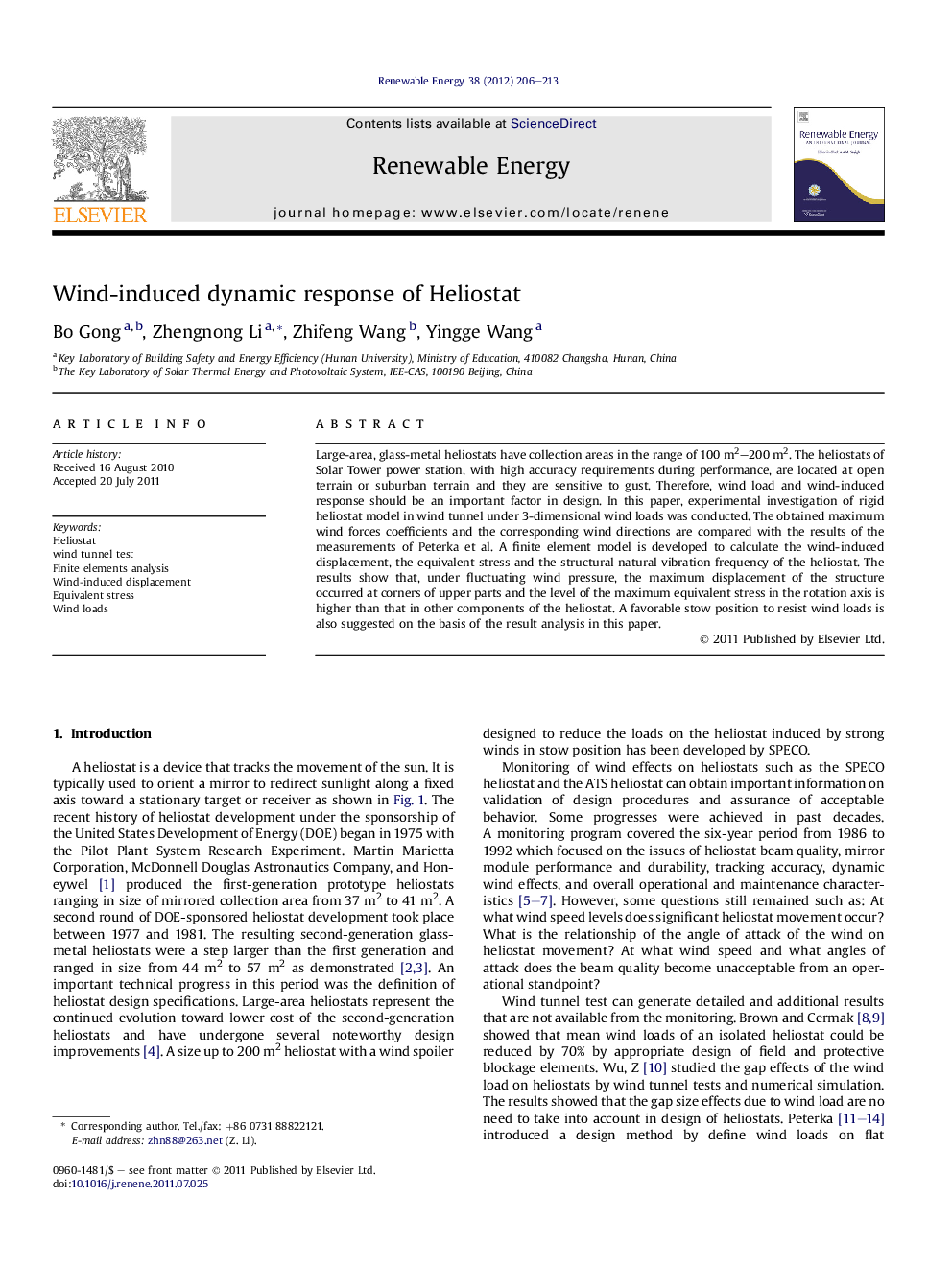| Article ID | Journal | Published Year | Pages | File Type |
|---|---|---|---|---|
| 301166 | Renewable Energy | 2012 | 8 Pages |
Large-area, glass-metal heliostats have collection areas in the range of 100 m2–200 m2. The heliostats of Solar Tower power station, with high accuracy requirements during performance, are located at open terrain or suburban terrain and they are sensitive to gust. Therefore, wind load and wind-induced response should be an important factor in design. In this paper, experimental investigation of rigid heliostat model in wind tunnel under 3-dimensional wind loads was conducted. The obtained maximum wind forces coefficients and the corresponding wind directions are compared with the results of the measurements of Peterka et al. A finite element model is developed to calculate the wind-induced displacement, the equivalent stress and the structural natural vibration frequency of the heliostat. The results show that, under fluctuating wind pressure, the maximum displacement of the structure occurred at corners of upper parts and the level of the maximum equivalent stress in the rotation axis is higher than that in other components of the heliostat. A favorable stow position to resist wind loads is also suggested on the basis of the result analysis in this paper.
Graphical abstractFigure optionsDownload full-size imageDownload as PowerPoint slideHighlights► The structural natural vibration frequency of the heliostat is calculated. ► The peak displacement of the mirror panels was analyzed. ► The maximum equivalent stress of the heliostat components was analyzed. ► The wind vibration coefficients have been shown in this paper for heliostat design. ► The suitable stow position of heliostats is suggested in this paper.
